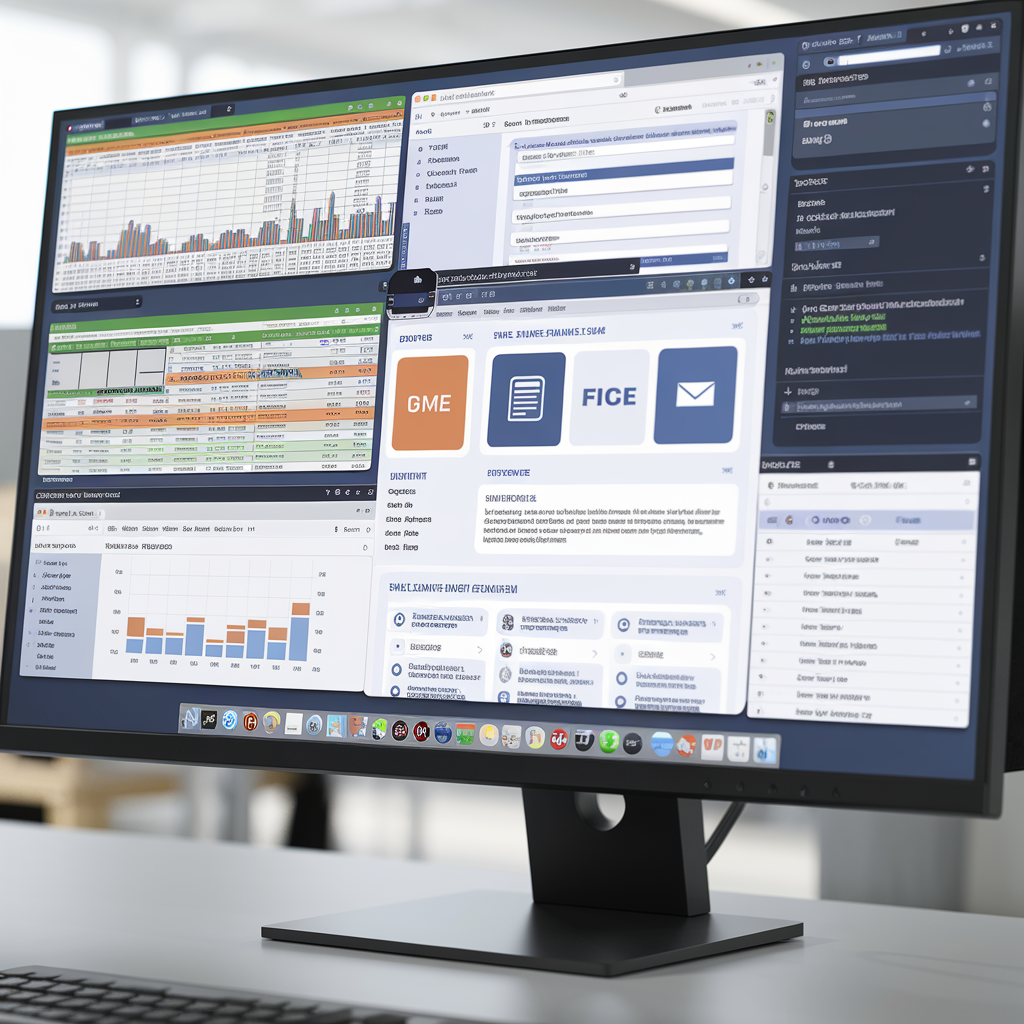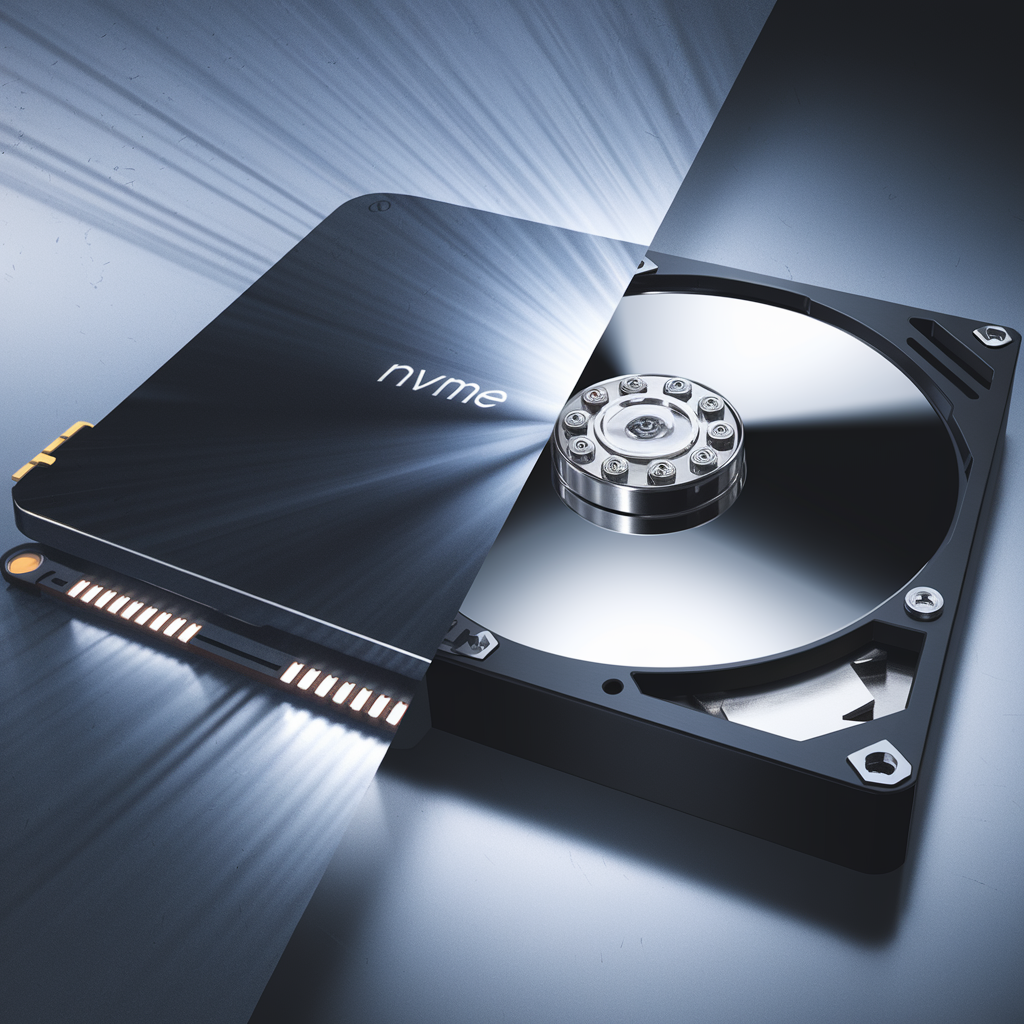
What Makes A Good Computer For Business Use?
How Do We Choose A Good Computer For Our Business? You're definitely not alone when answering this question.
Picking the right machine feels like a high-stakes decision – it's a significant investment, and the wrong choice can lead to daily frustration and lost productivity.
The good news? It doesn't have to be that complicated.
Think of this guide as your friendly roadmap.
We're going to cut through the jargon and focus on what really matters for business users.
We'll break down each component, explaining how it impacts your day-to-day work, so you can confidently choose a PC that empowers your business, rather than hinders it.
Step 1: Forget the Specs (For Now) - What Will You Actually Do With It?
Before we even whisper "gigahertz" or "terabyte," let's get crystal clear on the most crucial question:
What is the primary purpose of this computer?
This isn't a trick question.
The answer fundamentally shapes every other decision we'll make.
Be honest about the daily grind this machine will face. Consider these common scenarios:
- The Daily Driver (Admin & General Office Tasks): Are we talking email, web browsing, word processing, spreadsheets, maybe some basic accounting software? This user needs reliability and responsiveness for everyday tasks but doesn't require immense processing power.
- The Multitasking Powerhouse (Power User): Is this for someone juggling multiple complex spreadsheets, large databases, presentation software, numerous browser tabs, and perhaps some light photo editing? They need more horsepower to keep things running smoothly without lag.
- The Creative Engine (Graphics & Video): Will this machine be crunching pixels for graphic design, editing high-resolution videos, working with CAD software, or rendering 3D models? This demands top-tier performance, especially in processing and graphics capabilities.
- The Road Warrior (Laptop Focus - A Quick Aside): While this guide focuses primarily on desktops, if mobility is key, the considerations shift slightly towards battery life, weight, and screen size, though the core component principles still apply. (We'll stick mainly to desktops here, as the original article intended).
Why is this so important? Because matching the machine to the task prevents overspending on unnecessary power or, conversely, underspending and ending up with a frustratingly slow computer.
Once you've identified the primary role, the rest of the puzzle pieces start falling into place.
Step 2: Choosing Your Ally - The Manufacturer Matters for Business

You see the big names everywhere: HP, Dell, Lenovo, Acer, ASUS, Apple, Microsoft (Surface).
Brand recognition plays a role, but for business, reliability and support are paramount. When things go wrong – and hardware can fail – you need a swift and efficient resolution.
The Business-Focused Trio: HP, Dell, and Lenovo
There's a reason these three dominate the business PC landscape:
- Business-Grade Support: They offer dedicated business support lines and warranty services (often called ProSupport or similar). This means faster response times, technicians familiar with business environments, and often, next-business-day on-site repair options. Consumer-grade support just doesn't compare when downtime costs you money.
- Build Quality & Longevity: Business lines are typically built with slightly higher quality components designed for longer operational hours than consumer models.
- System Management: Their business models often include features that make management easier for IT departments or support personnel (though this is less critical for very small businesses).
Why Not Others?
- Acer/ASUS: Often provide great value, especially in the consumer space, but their business support infrastructure is generally less robust than the big three.
- Apple (Macs): Excellent machines, particularly strong in creative fields. However, they operate in a different ecosystem (macOS), have a higher initial cost, and might present compatibility challenges if your business primarily uses Windows-based software. Support is good, but different from the PC world's business focus.
- Microsoft (Surface): Premium devices, great for portability and touch interaction, but can be pricier and sometimes less repairable/upgradable than traditional desktops.
The Verdict: For most businesses seeking standard desktop PCs, sticking with HP, Dell, or Lenovo's business lines is the safest bet.
You're investing not just in the hardware, but in the support infrastructure behind it.
Personal preference often comes down to aesthetics or specific model configurations, but all three offer solid business options.
(Personal Note: The original article leaned towards HP/Dell. Lenovo is equally strong in the business space, particularly known for their ThinkCentre desktops and ThinkPad laptops).
Step 3: Decoding the Processor (CPU) - The Brain of Your Operation
The Central Processing Unit (CPU) is essentially the computer's brain.
It executes instructions and performs calculations.
The faster and more powerful the CPU, the quicker your computer can handle tasks.
The Main Players: Intel vs. AMD
For years, Intel dominated. However, AMD's Ryzen processors have become incredibly competitive, often offering excellent performance, particularly in multi-threaded tasks (like video editing or running many applications simultaneously), sometimes at a better price point.
- Intel: Known for strong single-core performance (good for gaming and many general applications) and established reliability. Their Core series (i3, i5, i7, i9) is the standard.
- AMD: Ryzen processors (Ryzen 3, 5, 7, 9) often excel in multitasking and creative workloads due to typically having more cores/threads at similar price points.
Choosing the Right Tier (Intel Core Example):
- Intel Core i3 / AMD Ryzen 3: Suitable for basic tasks – email, web browsing, word processing. If the budget is extremely tight, it's an option, but it might feel sluggish sooner and isn't ideal for multitasking. Generally, try to avoid this for a primary business machine unless usage is very light.
- Intel Core i5 / AMD Ryzen 5: This is the sweet spot for most business users. It offers a great balance of performance and cost, capably handling multitasking, complex spreadsheets, presentations, and general office productivity. This tier provides longevity and ensures a smooth experience for the vast majority of roles.
- Intel Core i7 / AMD Ryzen 7: Step up to this level for demanding tasks. Think power users juggling many heavy applications, large database work, frequent photo editing, or light video editing. It provides significantly more processing power for smoother performance under heavy load.
- Intel Core i9 / AMD Ryzen 9: Primarily for high-end creative professionals dealing with 4K+ video editing, complex 3D rendering, scientific simulations, or extreme multitasking. Overkill for most standard business needs.
The Bottom Line: Don't skimp too much here.
An i5 or Ryzen 5 is the recommended baseline for a productive business experience.
An i7/Ryzen 7 is justified for more demanding roles.
Step 4: RAM (Memory) - Your Computer's Short-Term Workspace
Random Access Memory (RAM) is like your computer's desk space.
It's where currently running applications and data are temporarily stored for quick access by the CPU.
The more RAM you have, the more things your computer can juggle simultaneously without slowing down.
How Much RAM Do You Need?
- 8GB: Once considered sufficient, this is now the absolute bare minimum for a Windows-based business PC. It can handle basic tasks, but you'll likely experience slowdowns if you open many browser tabs, large documents, or multiple applications at once. Avoid this if possible for a primary work machine.
- 16GB: This is the new standard and highly recommended for almost all business users. It provides ample headroom for smooth multitasking, handling numerous browser tabs, office applications, and even some light creative work without performance hiccups. It's the best investment for future-proofing and ensuring a consistently responsive experience.
- 32GB or More: Necessary for heavy creative workloads (video editing, graphic design with large files, CAD), running virtual machines, or extremely demanding multitasking scenarios. Most typical business users won't see a significant benefit beyond 16GB.
Why More RAM Matters: When your PC runs out of physical RAM, it starts using a portion of your storage drive (SSD or HDD) as "virtual memory."
This is much slower than real RAM and is what causes that frustrating lag and unresponsiveness when you have too much open.
16GB significantly reduces the chance of this happening during normal business use.
The Verdict: Aim for 16GB of RAM. It's the sweet spot for performance, multitasking, and future-proofing for the typical business PC lifecycle (3-5 years).
Step 5: Storage - Where Your Files Live (Speed vs. Size)
Storage is where your operating system, applications, and all your documents, photos, and other files are permanently kept.
There are two main types, and the difference is HUGE:
- Hard Disk Drive (HDD): The traditional option. Uses spinning magnetic platters and a mechanical arm to read/write data.
- Pros: Cheaper per gigabyte, available in very large capacities (multiple terabytes).
- Cons: Much slower (boot times, application loading, file transfers), more susceptible to damage from drops/bumps due to moving parts, noisier.
- Solid State Drive (SSD): Uses flash memory chips (like a USB drive, but much faster and more robust). No moving parts.
- Pros: Dramatically faster (often 10x or more) than HDDs, silent operation, more durable, lower power consumption.
- Cons: More expensive per gigabyte than HDDs (though prices have dropped significantly).
SSD is Non-Negotiable for Business Productivity

The single biggest performance upgrade you can make to any computer is switching from an HDD to an SSD as the primary drive (where the operating system is installed).
- Boot Times: Windows starts in seconds, not minutes.
- Application Loading: Programs open almost instantly.
- File Operations: Saving, opening, and transferring files is significantly quicker.
- Overall Responsiveness: The entire system feels snappier and more fluid.
This will allow you to save 10-20 minutes per day.
This isn't an exaggeration.
Waiting for a slow computer is a direct drain on productivity.
The time saved quickly justifies the extra cost of an SSD.
What About Capacity?
- 256GB SSD: A common starting point in budget business PCs. Can be sufficient if you primarily store files on a network server or in the cloud and don't install tons of large applications. Can feel cramped quickly, though.
- 512GB SSD: A comfortable and recommended size for most business users. Provides ample space for the OS, standard business applications, and a good amount of local file storage. Offers a good balance of cost and capacity.
- 1TB SSD or Larger: Ideal for users who store large files locally (video editors, graphic designers, engineers) or install many large applications.
NVMe SSDs: A newer, even faster type of SSD that connects directly via the PCIe interface.
While faster than standard SATA SSDs, the real-world difference for typical business tasks (beyond huge file transfers or specific workloads) might not be as dramatic as the HDD-to-SSD jump.
Nice to have, but a standard SATA SSD is already a massive improvement.
The Verdict: Insist on an SSD for the primary drive. A 512GB capacity is the recommended sweet spot for most business users.
Don't let a manufacturer sell you a new business PC with only an HDD in 2025!
Step 6: Operating System (OS) - The Foundation
For PCs, the choice is almost always Windows.
The key decision for businesses is Home vs. Pro.
- Windows 11 Home: Fine for solo entrepreneurs or very small businesses not using a central server. Lacks features needed for larger or more structured environments.
- Windows 11 Pro: The standard choice for most businesses. Offers crucial features like:
- Domain Join: Ability to connect the PC to a Windows Server domain for centralized management, security policies, and file sharing. Essential for businesses with servers.
- BitLocker Encryption: Robust full-disk encryption to protect sensitive data if the computer is lost or stolen.
- Remote Desktop Host: Allows you (or IT support) to remotely connect to and control the PC.
- Group Policy Management: Centralized configuration and security settings management (usually requires a server).
- Hyper-V (Virtualization): Built-in tools to run virtual machines (useful for testing or running older software).
Why Pro Matters: Even if you don't have a server today, choosing Pro provides flexibility for future growth and significantly enhances security options (especially BitLocker). Upgrading from Home to Pro later involves an additional cost.
The Verdict: Choose Windows 11 Pro (or Windows 10 Pro if standardizing on that for now). The added security and management features are well worth it for any business context.
Step 7: Handling the Past - Software Compatibility
Does your business rely on older, perhaps custom-built software that hasn't been updated in years? This is a critical consideration.
- Compatibility Mode: Windows has built-in compatibility settings that can sometimes trick older software into running on a newer OS. It's hit-or-miss but worth trying first.
- Virtualisation: If compatibility mode fails, you might need to run an older version of Windows (like Windows 7 or XP) inside a "virtual machine" (VM) on your new Windows 11 Pro PC. This requires:
- Windows 11 Pro (for Hyper-V) or other virtualization software (like VirtualBox).
- Sufficient RAM (16GB minimum, 32GB better if the VM will be used heavily).
- Adequate storage space for the VM's virtual hard disk.
- A legitimate license for the older Windows version being virtualized.
This adds complexity and requires more powerful hardware.
If legacy software is essential, factor these needs into your CPU, RAM, and OS choices, and potentially consult with an IT professional.
Step 8: Size & Shape - The Physical Form Factor
Desktops aren't just big beige boxes anymore.
Consider where the PC will live and how much space you have.
- Mini-Tower: The traditional size. Offers the most room for internal components and future upgrades (adding graphics cards, more storage). Best airflow/cooling. Takes up more space.
- Small Form Factor (SFF) / Desktop: Significantly smaller, designed to sit horizontally on a desk (sometimes under a monitor) or vertically. Less internal expansion room than a tower. A good compromise between size and capability.
- Micro / Tiny / Mini PCs: Extremely compact, sometimes small enough to mount behind a monitor. Limited upgradability and potentially less powerful due to thermal constraints. Great for saving space or specific applications like kiosks.
- All-in-One (AIO): The computer components are built directly into the back of the monitor.
- Pros: Saves space, reduces cable clutter.
- Cons: Often use laptop-grade components (less powerful), limited or no upgradability, if one part fails (PC or monitor), the whole unit may need repair/replacement, potentially shorter lifespan due to heat concentration. Generally not recommended unless space saving is the absolute top priority.
The Verdict: For most businesses wanting a balance of performance, upgradability, and reasonable size, Small Form Factor (SFF) or Mini-Towers are usually the best choices. Consider the specific workspace when deciding.
Step 9: The Supporting Cast - Peripherals (Keyboard, Mouse, Monitor)

Don't neglect the tools you interact with directly all day!
- Keyboard & Mouse:
- Wired vs. Wireless: The original article advised against wireless due to batteries. While valid in large offices, reliable wireless technology and rechargeable options have improved. However, wired remains the simplest, most reliable (no interference/battery issues), and often cheapest option. For shared workstations, wired is often preferred.
- Ergonomics: Consider ergonomic keyboards and mice if users spend long hours typing, to reduce strain. This is a worthwhile investment in employee comfort and health.
- Monitor:
- Size Matters: Bigger is often better for productivity. A larger screen allows you to see more information at once, reducing scrolling and window switching. Aim for at least a 24-inch monitor. 27-inch offers a significant step up in usable space.
- Resolution: Don't just look at size, look at resolution (the number of pixels).
- Full HD (FHD) / 1920x1080: Standard, good for 24-inch monitors.
- Quad HD (QHD) / 2560x1440: Sharper image, great for 27-inch monitors. Offers more screen real estate than FHD. A good sweet spot.
- 4K / Ultra HD (UHD) / 3840x2160: Very sharp, excellent for creative work or displaying lots of data. May require scaling text/icons to be readable on smaller screens (like 27-inch). Best on 32-inch+ monitors.
- Dual Monitors: A proven productivity booster for many roles, especially those involving cross-referencing information (accounting, coding, research). Requires a PC graphics setup that supports multiple displays (most modern business PCs do). It's often more cost-effective and flexible than one massive ultra-wide monitor.
- Ergonomics: Look for monitors with adjustable stands (height, tilt, swivel) for better posture.
The Verdict: Invest in comfortable input devices. For monitors, aim for at least 24-inch Full HD, but 27-inch QHD is a significant productivity upgrade. Consider a dual-monitor setup for relevant roles.
Step 10: Connecting Everything - Ports and Connectivity
Ensure the PC has the ports you need now and potentially in the future.
- USB: You'll need ports for keyboard, mouse, webcam, printers, external drives, etc. Look for a mix of:
- USB-A (the traditional rectangle): Still widely used.
- USB-C (the smaller oval): Increasingly common for modern peripherals, charging, and even display output.
- Ensure some are USB 3.0 or higher (usually blue or marked SS) for faster data transfer speeds.
- Display Ports: HDMI and DisplayPort are standard for monitors. Ensure the PC has the right type and number of ports for your monitor setup.
- Ethernet Port: Essential for a reliable wired network connection in an office environment.
- Wi-Fi / Bluetooth: Built-in Wi-Fi is convenient, though wired is often preferred for stability in an office. Bluetooth is needed for wireless keyboards, mice, headsets.
Putting It All Together: The Ideal Business PC Blueprint (Circa 2025)
Based on everything we've covered, here’s a strong baseline configuration for a typical, productive business desktop PC:
- Manufacturer: HP, Dell, or Lenovo (Business Line)
- Form Factor: Small Form Factor (SFF) or Mini-Tower
- Processor (CPU): Intel Core i5 (12th gen or newer) or AMD Ryzen 5 (5000 series or newer)
- RAM: 16GB DDR4 (or DDR5 if available/supported)
- Storage: 512GB NVMe SSD (or SATA SSD if budget is tighter)
- Operating System: Windows 11 Pro
- Monitor: 24-inch Full HD (Minimum) or 27-inch QHD (Recommended) - potentially dual setup
- Peripherals: Comfortable wired keyboard & mouse (or reliable wireless), Webcam
- Warranty: 3-Year Business Warranty (Next Business Day On-Site support if possible)
Customising for Need:
- Budget User (Light Tasks Only): Could potentially drop to 8GB RAM and 256GB SSD, but 16GB/512GB is strongly advised if affordable. Stick with i5/Ryzen 5 if possible.
- Power User: Upgrade to Intel Core i7 / AMD Ryzen 7, potentially 32GB RAM, 1TB SSD.
- Creative Professional: Intel Core i7/i9 or AMD Ryzen 7/9, 32GB+ RAM, 1TB+ NVMe SSD, Dedicated Professional Graphics Card (NVIDIA Quadro/RTX Ada Gen or AMD Radeon Pro).
Choosing a business computer isn't just about buying hardware; it's about investing in a tool that directly impacts your team's efficiency and output.
By focusing on the intended use case first and then selecting components that match – prioritizing an SSD, sufficient RAM (16GB!), a capable processor (i5/Ryzen 5+), and the right OS (Windows Pro) – you can equip your business with machines that empower rather than frustrate.
Don't be swayed solely by the lowest price tag; consider the total cost of ownership, including support and the potential cost of lost productivity from an underpowered machine.
Choose wisely, and set your business up for smooth sailing.



